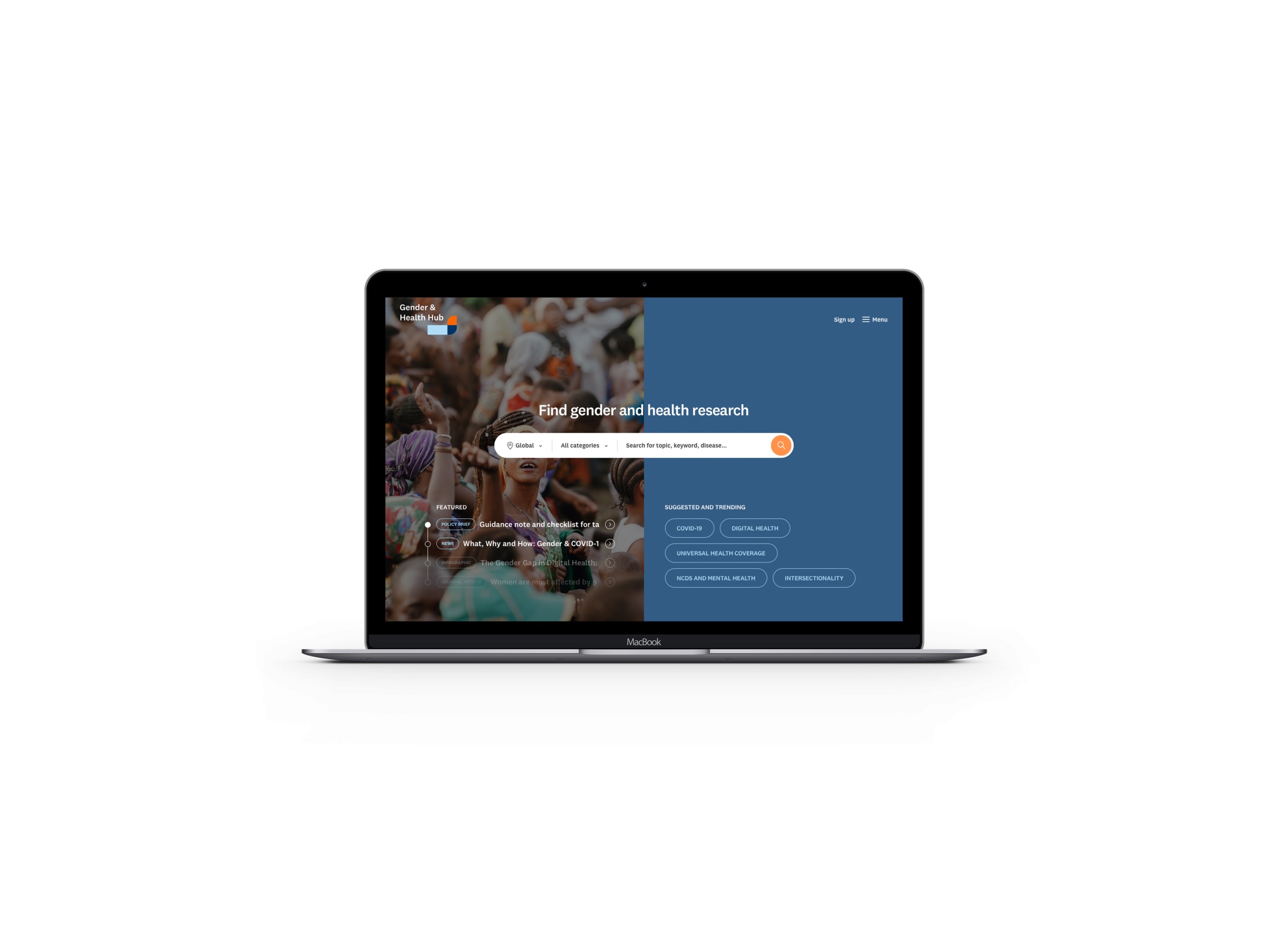Decolonising VAWG Research and Knowledge Production


From 2021-2023, Equality Institute partnered with the United Nations University International Institute for Global Health (UNU–IIGH) to support the Gender & Health Hub (GHH) a global platform that brings together thought leaders, practitioners, and policymakers to advance gender equality in health systems and outcomes. Coordinated by UNU–IIGH and co-funded by the Gates Foundation, the GHH is designed to consolidate the best policy-relevant evidence on gender integration in health, generated through both research and practice.
Our role as communications partner included everything from communications strategy and brand identity to print design, social content, web design and development, with the shared aim of strengthening the GHH’s global presence and supporting more effective evidence-to-policy engagement.
Despite some progress, the world remains off track in meeting the 2030 Sustainable Development Goals (SDGs) related to health (SDG 3) and gender equality (SDG 5). There is growing recognition that progress in one cannot be achieved without progress in the other. Yet, there remains a lack of consolidated, practice-based evidence and accessible resources to support the effective integration of gender into health policy and programming. For governments, UN staff, global health institutions and civil society actors, this knowledge gap limits the potential to create impactful, gender-transformative health systems.
UNU–IIGH sought to respond to this need by creating a platform that could:
Our challenge was to design and deliver a strategic, accessible, and engaging digital communications approach that could support these goals, while serving a global and highly diverse audience.
As the GHH communications partner, we collaborated closely with the team at UNU–IIGH to design a new brand identity, logo, and an evidence-based communications and engagement strategy that could resonate with global audiences.
We also developed a high-impact infographic series on the gendered impacts of COVID-19, alongside a range of email and social media content to increase visibility, reach and engagement.
Later, in partnership with JTB Studios, we led the design and development of the GHH website, a robust, user-centred digital platform with the following key objectives:
The website was designed with personalisation and search functionality at its centre, making it possible for users to explore layered and complex evidence across themes, regions, and content types. Interactive elements were built in to encourage deeper engagement, support learning, and spread research further across networks.
The Gender & Health Hub now serves as a trusted digital home for evidence, policy insight and global collaboration — bridging the gap between knowledge and action. Through our work, we’ve helped enable:
As a result, the GHH is better equipped to influence global health policy, shape practice, and support the integration of gender into health systems worldwide. In doing so, it contributes to progress on multiple SDGs – particularly SDG 3 (Health) and SDG 5 (Gender Equality), while strengthening global capacity to improve health outcomes for all.
The land we live and work on always was, and always will be, Aboriginal land. We pay our respects to the Traditional Custodians of Country throughout Australia and acknowledge the ongoing leadership role of Aboriginal & Torres Strait Islander communities in preventing violence against women. We also acknowledge Traditional Custodians of the lands where EQI works around the world.
Read MoreYou have been logged out.
"*" indicates required fields